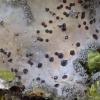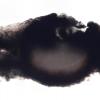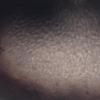
09-01-2026 17:41
Arnold BüschlenHallo, F. dilatata wird von vielen Bryoparasiten

10-01-2026 20:00
Tom SchrierHi all,We found picnidia on Protoparmeliopsis mur

07-01-2026 22:22
 Danny Newman
Danny Newman
Tatraea sp. on indet. hardwood The Swag, Great Sm

10-01-2026 01:18
 Danny Newman
Danny Newman
cf. Neovaginatispora fuckelii on indet. shrub Pre

07-01-2026 10:24
 Danny Newman
Danny Newman
Pezicula sp. on indet. hardwood Appalachian Highl

09-01-2026 10:08
 Blasco Rafael
Blasco Rafael
Hola, en el mismo habitat que la anteriorRetamaDia

08-01-2026 21:22
 Blasco Rafael
Blasco Rafael
Hola, He recogido esta muestra de Orbilia sobre Re

07-01-2026 17:29
 Marc Detollenaere
Marc Detollenaere
Dear Forum,On a barkless Populus I found some smal

10-11-2021 17:33
 Riet van Oosten
Riet van Oosten
Add-on topic http://www.ascofrance.com/forum/7059

07-01-2026 10:05
 Danny Newman
Danny Newman
cf. Chaetospermum on XylariaCosby Campground, Grea
This is a lichenicolous fungus found growing on the lobes of _Sticta limbata_. Does anyone have any idea about what it
could be?
I attach a collection of photos with the specimen and the corresponding microscopy. The spores are hialine, simple, guttulate (mostly with one or two drops), many of them have one of the ends plane (truncate), with the following dimensions:
(6.9) 8.5 – 11.7 (12.2) x (5.2) 5.6 – 6.9 (7.6) µm
Q = (1.1) 1.3 – 1.9 (2.1) ; N = 35
Me = 9.8 × 6.2 µm ; Qe = 1.6 .
Thanks,
zaca
Hi Zaca,
I haven't description of Bachmanniomyces santessonii. Perhaps it could be a way to follow ?
But, I repeat, I don't know this fungus.
Alain
Thanks for the hint. The matter is that I was not able to find any useful reference to the species you mentioned. Can you supply any?
Best regards,
zaca
I would say that your conidiomata belongs to the asexual form of Abrothallus welwitschii species growing on Sticta, also in Europe. They used to be named Vouauxiomyces.
Many thanks for your proposal. Certainly you have reasons to justify your proposal, but for a novice in the subject, like me, there are questions that I cannot answer.
After your proposal in the website of Alan Silverside, specifically in the page
http://www.lichens.lastdragon.org/lichenicolous/Abrothallus_welwitschii.html
I saw photos of Abrothallus welwitschii, the reference to an anamorph stage named Vouauxiomyces, and the bibliography given for the subject:
1) Hawksworth (1983), 20 (as A. parmeliarum, in part)
A key to the lichen-forming, parasitic, parasymbiotic and saprophytic fungi occurring on lichens in the British Isles. Lichenologist 15: 1–44.
2) Diederich in Nash et al. (2004), pp. 629.
Nash, T.H., Ryan, B.D., Diederich, P., Gries, C., & Bungartz, F. (eds.) (2004). Lichen flora of the Greater Sonoran Desert region, vol. 2.
I don't have the first reference but have the second.
There I could see a description of Abrothallus welwitschii. This species has apothecia, while looking to the photo of my specimen and to the sections of it one can see clearly perithecia. So, the question is: how can an anormorph stage have a perithecioid ascoma while the sexual stage present apothecia?
In the notes it is written: "Abrothallus welwitschii is characterized by the large, frequently pruinose apothecia, which are partly immersed for a long time in the thallus of Sticta species. A second species described from Sticta, Abrothallus stictarum Etayo, is distinguished by ascospores becoming 3-septate at maturity."
Maybe you can supply me other references to the subject.
Thanks again and my Best regards,
zaca
the asexual state is really a pycnidia, not a perithecium. Many Abrothallus have this kind of pycnidia, of some it is only known in this form. I send you the latest paper on the subject if you send me your email.
Best wishes. Javier
Thanks very much for clarifying the subject. If I understood correctly the form of the pycnidia has nothing to do with the type of ascoma, in case there is a sexual state.
You can get my e-mail by clicking my name at every message posted. Anyway, here it is:
zaca.lepista@gmail.com
Thanks again and my Best regards,
zaca




